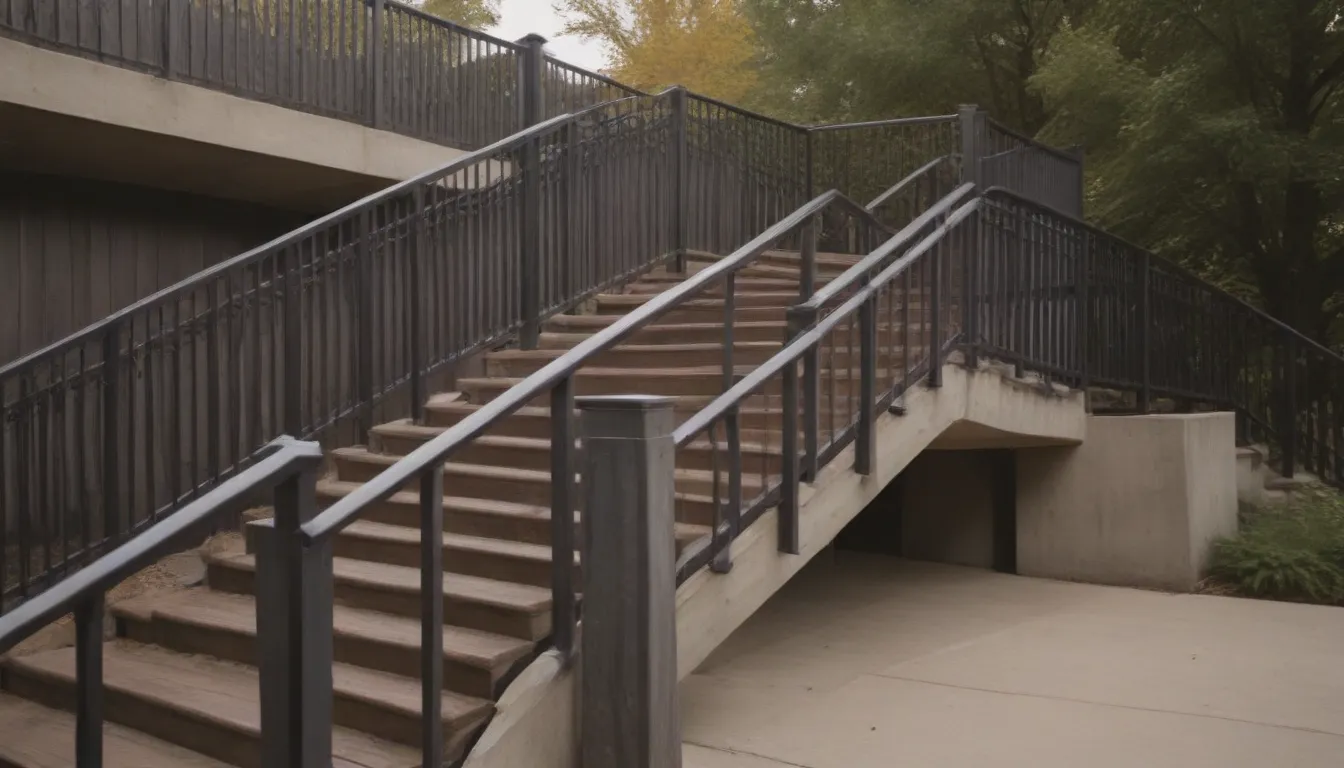Understanding and Implementing Deck Code Guidelines for Guardrails and Stairway Railings

When it comes to building code requirements for exterior decking railings and stairways, it’s crucial to adhere to the regulations set in place. With properly constructed decks, you can help prevent serious injuries and accidents. According to the Consumer Product Safety Commission, failures or collapses of decks and balconies between 2016 and 2019 led to an alarming 2,900 injuries.
As the regulations surrounding building codes are continuously evolving, it’s essential to stay informed and up-to-date on the latest requirements. For instance, outdated construction methods like toe-nailing, where nails are driven through joints at an angle, are no longer accepted as proper connections according to the current International Building Code (IBC). While some older decks may be grandfathered in, new requirements must be followed whenever building a new deck or renovating an existing one.
Building Code Basics: Understanding the Terminology
As a model code developed by the International Code Council, the IBC serves as a foundation for states, cities, and other local jurisdictions to adopt and adapt for their specific needs. Therefore, it’s important to consult your local permitting office and review the applicable code before embarking on any construction projects. To better navigate the IBC code requirements, familiarize yourself with some key terminology:
- Guardrails:
- Railing:
- Balusters:
- Grade:
- Low-rise decks:
- Rise:
- Tread:
Tip: Always verify with your local jurisdiction to ensure compliance with specific regulations before finalizing your deck plans.
Deck Guardrail Height Requirements
Deck guardrails, also known as guards, should have a minimum height of 36 inches above the deck level for residential structures. While meeting this minimum height requirement is mandatory, installing guards that are taller is perfectly acceptable. Commercial deck guardrails, as typically seen in restaurants, bars, and multifamily residences like apartments and condos, must be at least 42 inches high.
Instances Where Guardrails Might Not Be Necessary
Not all decks are mandated to have guardrails. Decks that are no more than 30 inches above the ground may not require guardrails. So, if you come across a low-rise deck without guardrails, it is likely due to its height falling below the 30-inch threshold.
Guardrails on Low-Rise Decks
Despite the lack of requirement for guardrails on low-rise decks, many homeowners choose to install them for safety reasons. When opting for guardrails on a short deck, keep in mind that the height and baluster spacing are at your discretion. However, these guardrails must still possess the same level of strength as those on elevated decks to ensure they can withstand leaning and prevent collapse. Additionally, adding handrails to low-rise decks can offer benefits for disabled individuals as well.
Ensuring Compliance with Deck Stair Requirements
The IBC code outlines specific requirements for deck stairs to ensure structural integrity and safety. These requirements include:
Deck Balusters and Benches Compliance
The spacing between deck balusters plays a crucial role in ensuring safety. Balusters should be positioned no more than four inches apart, with the general guideline being that a 4-inch diameter ball should barely fit between them. This spacing is designed to prevent accidents, as it is approximately the same diameter as a baby’s head. When balusters meet a lower railing, the gap between the railing bottom and the deck surface should also be limited to four inches to maintain safety standards.
While some homeowners may consider using benches as alternatives to guardrails to preserve their deck’s view, benches do not meet safety requirements for guardrail height. On decks requiring guardrails, benches should not serve as replacements but rather be installed behind the guardrails at a minimum height of 36 inches above the deck surface.
Meeting Minimum Strength Requirements for Guardrails and Balusters
In accordance with the International Building Code, guardrails must be capable of withstanding a 200-pound force at the mid-span between posts without excessive deflection. Additionally, balusters and in-fill rails must sustain a minimum testing force of 50 pounds of concentrated load. Building inspectors typically assess the strength of guardrails and balusters by applying pressure to ensure they meet safety standards. In commercial settings, independent third-party testing agencies might use equipment that applies forces up to 500 pounds to ensure an additional safety margin.
Implementing these guidelines and requirements for guardrails and stairway railings is crucial for maintaining the safety and structural integrity of your deck. By staying informed and complying with local building codes, you can create a secure and inviting outdoor space for you and your loved ones.
References:
– Consumer Product Safety Commission. 2021
– International Building Code, International Code Council.





